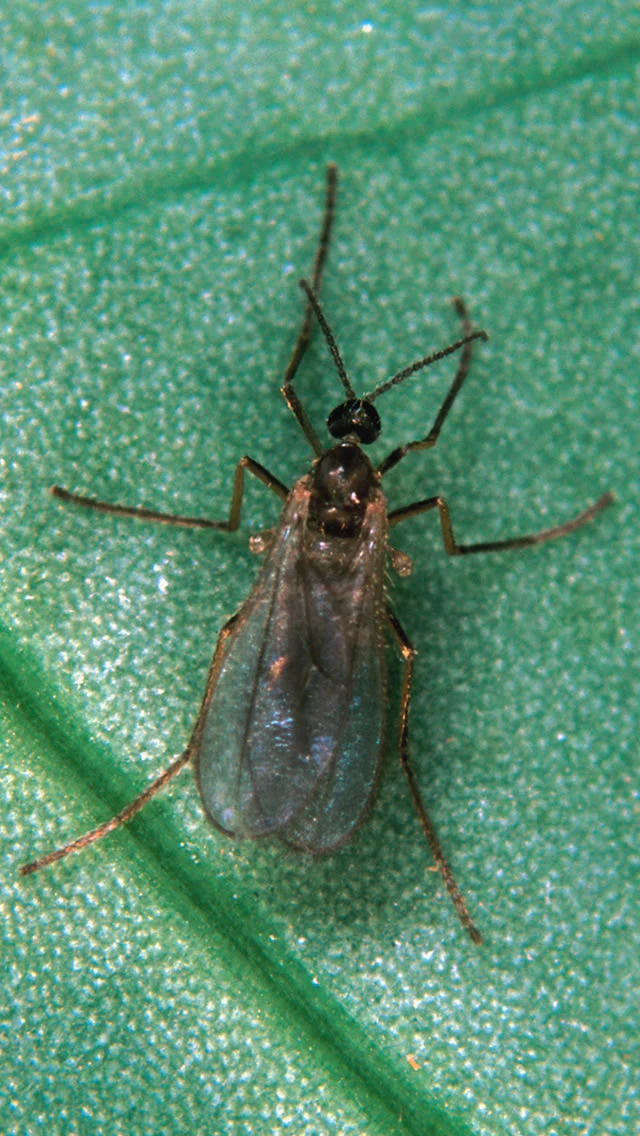
Pea Midge
Contarinia pisi
Identification
The adult midges are very small, 3 mm long, weak fliers and black/yellow in colour. The larvae are white and 2-3 mm long.
Symptoms
The larvae feed at the base of the flowers leading to flower abortion or small misshapen pods which fail to develop normally. Feeding can also occur on the growing point causing distortion which has been described as ‘nettle heading’.
Life-cycle
Adult midges, which survive for 4-5 days, emerge from the soil in June and after successfully mating, eggs (white, 0.5 mm long) are laid near the developing flower buds or the leading shoot. After 4 days the larvae emerge and feed on the ovaries of the flowers for 10-12 days. When fully fed they drop to the soil and pupate. A proportion of adults can emerge as a second generation after 11 days whilst others remain to overwinter and emerge in subsequent years.
Importance
Pea midge is a localised pest in certain areas of Lincolnshire and Yorkshire and vining peas are more at risk than combining peas. Damage to the flowers can cause sterility and pod loss as well as susceptibility to fungal infection by secondary diseases such as Botrytis, which ultimately lead to yield losses.
Threshold
In-field pheromone traps can give an accurate picture of adult activity.

Adult female pea midge

Pea midge larvae on a pea flower bud

Pea midge pheromone trap

Pea midge damage


